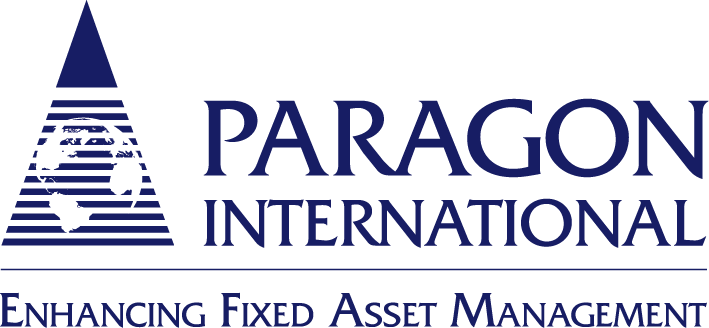Business Fixed Assets Are Subject to MACRS Depreciation. What Is That & How Does It Work?
MACRS is an IRS structure required for calculating depreciation on assets. As you would expect from the IRS, the MACRS depreciation system is complex and it punishes you if you fail to comply properly. In short: You do not want to mess this up.
You must understand MACRS if you want to maximize your deductions and stay on the right side of the law. So, let’s talk about it.
What Is MACRS Depreciation?
MACRS is an acronym for “Modified Accelerated Cost Recovery System.” This system outlines the ways your business can recover the capitalized cost of your assets over a specific period using annual deductions.
MACRS-compliant depreciation requires 3 steps:
- First, you must assign the correct MACRS class to each of your fixed assets. The different classes determine how many years you should depreciate each asset. (For example, a commercial building should be depreciated over a span of 39 years.)
- Second, you must determine the required MACRS system for depreciating each of your assets. There are 2 systems you can use, GDS and ADS.
- Finally, you must follow the prescribed depreciation schedule every year until the asset is either fully depreciated or disposed of.
This full process is what is commonly called fixed asset accounting.
The 2 MACRS Systems You Need to Know
Your business has 2 options for using MACRS depreciation. The one you use depends on your assets, their classes, and the rules surrounding each system.
- The General Depreciation System (GDS) is the most common one to use. Its timeline is based on the useful life of the asset, and it uses the declining or double-declining balance depreciation method. Depreciation schedules range from 3-39 years, depending on the asset.
- The Alternative Depreciation System (ADS) is a straight-line depreciation method. It is optional for some assets (see note below) but required for:
- Nonresidential real property, residential real property, and qualified improvement property held by an electing real property trade or business
- Any property with a recovery period of 10 years or more under GDS held by an electing farming business
- Any tax-exempt use property
- Any tax-exempt bond-financed property
- All property used predominantly in a farming business and placed in service in any tax year during which an election not to apply the uniform capitalization rules to certain farming costs is in effect
- Any property imported from a foreign country for which an Executive order is in effect because the country maintains trade restrictions or engages in other discriminatory acts
- Any tangible property used predominantly outside the United States during the tax year
- Any listed property used 50% or less in a qualified business use during the tax year
An important note about ADS: If you choose to use ADS instead of GDS on assets you could have used GDS for, you must apply ADS to all the items of the same asset class that you place into service the same year.
Adding to the Complexity: MACRS Conventions
Is your head spinning yet? We haven’t even talked about the MACRS conventions. These specify precisely when you are allowed to start and stop depreciating an asset.
For example, say you have a forklift that you need to depreciate. You know that you are required to depreciate it over a course of 5 years due to its asset class and the system you’ve chosen, but you may not know that you must start and end its depreciation on a specific day of the year, even though these dates are years apart. Really!
There are 3 MACRS depreciation conventions:
- The mid-month convention applies to real property. It allows one-half of a month of depreciation during the month the asset is placed into service, and the other half of that same month for depreciation in the year depreciation ends.
- The mid-quarter convention should be used if more than 40% of your business’s personal property (not real property) is placed into service during the final quarter of the tax year. This allows 1.5 months of depreciation during the quarter the asset is placed into service (assuming a 12-month tax year), and the other 1.5 months of the quarter for depreciation when the asset’s depreciation schedule ends.
- The half-year convention is used only if neither of the other 2 conventions apply. It allows 6 months of depreciation during the year the asset is placed into service, and the other 6 months of depreciation in the year the depreciation schedule ends.
Expert Tip: Fixed Asset Depreciation Software Clears Up Complexity
As a quick summary of what we’ve covered here:
- Assets must be depreciated on a specific timeline, depending on their asset class.
- Some assets typically leverage GDS, but others must use ADS.
- Depreciation must start and end on specific dates, which must be tracked over years or decades.
You can choose to manually calculate your MACRS depreciation as long as you know the type of property you are dealing with, the correct convention to be used, and the depreciation method you should use… but then it gets really complicated.
Over the years that you are depreciating your assets, a lot can (and will) change. Your assets will change in value. Some of your assets will be lost, stolen, or damaged. An unknown number of assets will be subject to evolving tax laws, which allow for faster depreciation schedules and transfers to different asset classes.
In short: if you track depreciation manually, you will have way too many spreadsheets to manage, way too many conventions to remember, way too many variables to track, and way too many headaches.
Spreadsheets have very limited classification and filtering capabilities, which can make it troublesome and time consuming to determine your eligibility for evolving tax deduction incentives.
Here’s an example: On January 1, 2023, the Section 168(k) allowances were reduced to 80% bonus depreciation. On January 1, 2024, that will reduce further to 60% bonus depreciation allowed. Each year, another 20% in bonus depreciations will be lost. Can you easily filter your spreadsheet fixed asset data right now to see what you can claim 80% bonus depreciation on before the end of this year?
Therefore, our expert tip is that you use Sage Fixed Assets – Depreciation, the most popular fixed asset depreciation software of all time.
Learn More About Sage Fixed Assets – Depreciation
Serving clients since 1985, Paragon International, Inc. provides independent, impartial and accurate cost segregation analyses, and property valuations and appraisals to assist in and support decisions related to taxes, risk management, investment, financing and corporate planning. Our consultants have extensive fixed asset experience – they’re fixed asset experts. Because of that we are able to offer a unique combination of irreplaceable human resources and advanced technology. We have specialists experienced in valuing closely-held securities, patents and other intangible assets, business enterprises, buildings, equipment and real estate. In addition, Paragon provides complete inventory and asset management services and solutions, including software customization and training, barcode labels and scanners, and tailored inventory services such as data conversion and integration, asset inventories, asset policies, cost reconciliation, and appraisal services. Contact Paragon International to discover how we can help you.




